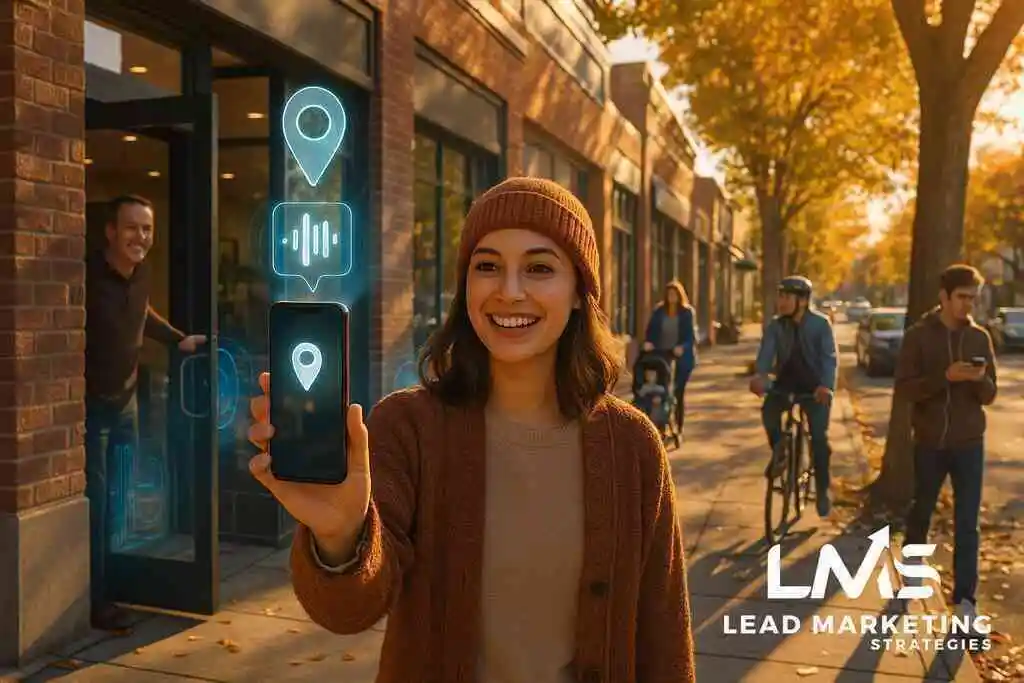
Navigating the Digital Landscape
Understanding the Core of SEO and PPC
In the ever-evolving realm of digital marketing, understanding the core principles of both SEO (Search Engine Optimization) and PPC (Pay-Per-Click) is crucial. SEO strategies focus on enhancing search engine rankings through organic methods, such as optimizing content and building quality backlinks. This approach thrives on organic reach and aims to improve search engine visibility without direct costs associated with each click. In contrast, PPC advertising secrets involve paying for ad placements to appear in search engine results, thereby generating immediate visibility and traffic. As a pivotal element of digital marketing, both strategies serve unique purposes but require nuanced execution for optimal results.
The Role of Organic and Paid Search in Digital Marketing
The symbiotic relationship between organic and paid search in digital marketing cannot be overstated. Organic search results, anchored by SEO efforts, offer a sustainable way to attract users with genuine content that matches their search intent. Meanwhile, paid search campaigns, such as those using Google Ads paid search, provide businesses with the capability to target specific keywords and demographics, ensuring precise audience reach. Effectively balancing both strategies allows businesses to capture a broader share of search engine traffic, meeting varying customer needs while simultaneously increasing overall online presence and brand awareness.
Marketing Tip Insights: Balancing Your Digital Strategy
Achieving a well-balanced digital strategy requires an understanding of both SEO and PPC’s strengths. According to insights from Marketing Tip, successful digital marketing strategies often utilize data-driven approaches to optimize conversion rates and ensure measurable results. By integrating SEO and PPC efforts, businesses can maximize their digital marketing efficiency, reaching potential clients through both organic and paid avenues. The insights from Marketing Tip emphasize the importance of continuously monitoring the digital landscape, adapting to changes in search engine algorithms, and maintaining a fluid strategy that evolves with industry trends.
Delving into the SEO Spectrum
Search Engine Rankings: Enhancing Visibility Organically
In the intricate world of digital marketing, enhancing search engine rankings organically is pivotal. Strategies focusing on SEO prioritize creating high-quality content that aligns with user intent. By understanding SEO strategies, businesses can initiate efforts that naturally improve their visibility without incurring the costs associated with paid campaigns. Critical components include keyword optimization, meta tagging, and structuring website architecture to support search engine crawlers. As marketers refine these strategies, they tap into a predictable stream of organic traffic, building trust and long-term customer relationships. Embedding these practices into a digital marketing plan ensures a sustainable path to increased visibility and brand recognition.
Content Marketing and Link Building for Long-term Success
The backbone of any proficient SEO strategy lies in effective content marketing combined with strategic link building. Crafting compelling content positions brands as industry leaders, paving the way for link building opportunities. Acquiring quality backlinks from reputable sources not only boosts domain authority but also drives referral traffic, enhancing online visibility. Consistent engagement through blog posts, infographics, and interactive content deepens connections with the target audience while naturally attracting inbound links. Marketers understand that both aspects work synergistically to create a robust digital presence. Thus, focusing on these components can lead to enduring success in the competitive arena of search engines.
Algorithm Updates: Staying Ahead in the SERP Game
Navigating the nuances of constant algorithm updates is a challenge that requires vigilance and adaptability. Google’s algorithm changes can dramatically impact search rankings, necessitating a proactive approach. Marketers must stay ahead in the SERP game by continuously updating their strategies in response to these changes. Utilizing data-driven marketing insights can provide the necessary edge, allowing for real-time adjustments that maintain competitive positioning. Awareness of these shifts and their implications on SEO means constantly refining tactics to ensure they align with current guidelines. Embracing this dynamic environment fosters resilience, equipping businesses to thrive despite algorithmic uncertainties.
The Power of Precision with PPC
Decoding Keyword Targeting and Bid Management
Precision in pay-per-click advertising, particularly in terms of keyword targeting and bid management, is instrumental for campaign success. By understanding PPC and SEO strategies, marketers can identify relevant keywords that resonate with their target audience. Keyword targeting allows for the meticulous selection of search terms that align with user intent, increasing the likelihood of engagement. Furthermore, strategic bid management ensures that advertising budgets are utilized efficiently, optimizing for maximum return on investment. Effective bid strategies consider factors such as competition, click-through rates, and conversion potential, enabling real-time adjustments to capture optimal market opportunities. This level of precision in PPC campaigns empowers businesses to maintain a competitive edge in the bustling digital advertising arena.
Google Ads and the Art of Ad Copy Strategy
Crafting compelling ad copy is an essential skill in the realm of Google Ads. Understanding how to wield this artful strategy can significantly impact campaign efficacy and enhance online presence. Effective ad copy must capture attention swiftly and communicate the brand’s message succinctly. Leveraging advanced PPC strategies, marketers can develop ads that not only speak to customer needs but also drive high click-through rates. The integration of dynamic elements, like ad extensions, further enriches the user experience, encouraging deeper engagement. By aligning ad copy with user search intent and leveraging powerful calls-to-action, businesses can improve their Quality Scores and achieve superior search engine rankings. This meticulous strategy in creating engaging ad copy fosters a strong connection with the target audience, driving measurable results in conversion rate optimization.
Budget Allocation and ROI: Measuring Success
In the landscape of PPC advertising, meticulous budget allocation is pivotal for achieving desired outcomes. Balancing digital strategy involves understanding the nuances of investment across various digital marketing avenues to maximize return on investment. Businesses must focus on allocating resources efficiently, ensuring that monetary investments align with strategic marketing objectives. Regular analysis of campaign performance through metrics such as conversion rates and cost-per-click effectiveness is imperative. By employing data-driven marketing insights, companies can make informed decisions on budget reallocation to channels demonstrating superior performance. This proactive approach not only ensures financial prudence but also drives sustainable growth through continuous optimization of advertising campaigns. As businesses navigate the complexities of PPC, mastery in budget management emerges as a critical component in realizing both immediate and long-term marketing success.
Integrating SEO and PPC for a Holistic Approach
Crafting a Unified Digital Marketing Plan
In the realm of digital marketing agency efforts, crafting a unified digital marketing plan involves strategically synchronizing SEO and PPC tactics. By aligning these strategies, businesses can create a comprehensive approach that capitalizes on the strengths of both. This approach involves a thorough analysis of target audience behaviors, ensuring that content marketing and ad campaigns address specific customer intents at various stages of the purchasing journey. Leveraging both organic search engine visibility and paid advertising campaigns allows companies to effectively cover a myriad of touchpoints, thereby increasing brand awareness. The synergy of these strategies is further enhanced by continuous monitoring and adaptation to industry trends, fostering a dynamic environment in which businesses can thrive.
Utilizing Data for Enhanced Conversion Rate Optimization
The effective use of data-driven marketing insights is essential for refining conversion rate optimization (CRO) efforts within digital marketing plans. Combining metrics from both SEO and PPC campaigns provides a robust foundation for understanding user behaviors and preferences. Data analytics empower marketers to fine-tune keyword targeting and ad copy, ensuring each element resonates with the intended audience. Conversion rate optimization flourishes through diligent analysis of factors such as click-through rates, landing page performance, and user engagement metrics. This comprehensive understanding allows businesses to make informed decisions, optimizing their strategies for maximum impact. By utilizing data-driven insights, brands can create a more seamless user experience, ultimately enhancing their conversion rates and driving sustainable growth.
SEO and PPC: Complementary Forces for Traffic Generation
SEO and PPC can be viewed as complementary forces driving traffic generation, each offering distinct advantages that together create a powerful digital marketing strategy. While SEO strategies focus on building organic reach and long-term visibility through techniques like content marketing and link building, PPC aims for immediate impact through targeted ad placements. This dual approach ensures that businesses capture users across different stages of the funnel; while organic efforts build credibility and trust over time, paid tactics bring rapid, measurable results. Both strategies, when integrated thoughtfully, amplify overall online presence by aligning search engine marketing goals. Through strategic application and monitoring, companies can harness the full potential of SEO and PPC, making their marketing efforts more resilient and effective in an ever-competitive digital landscape. This integration ultimately paves the way for successful brand elevation and sustained customer engagement.
Conclusion: The Synergy of Strategies
Drawing Insights from Marketing Tip’s Expertise
Drawing from Lead Marketing’s approach, businesses can effectively harness the power of combined SEO and PPC strategies. The integration of insightful data and industry-specific techniques allows for a nuanced understanding of both disciplines. By leveraging Marketing Tip’s extensive experience, companies can develop tailored strategies that precisely meet their marketing goals. The expertise provided through detailed case studies and practical insights offers a concrete foundation for optimizing both organic and paid search efforts. This results in a comprehensive strategy that ensures a balanced digital marketing presence, enhancing visibility in a competitive market.
Adapting to an Ever-evolving Marketing Ecosystem
In the swiftly changing landscape of digital marketing, adaptability is key. Companies must remain vigilant, adjusting their approaches in response to New York’s emerging marketing trends. The ability to pivot strategies in alignment with evolving algorithms and consumer behaviors ensures sustained relevance. By fostering a culture of continuous learning and flexibility, businesses can anticipate shifts in market dynamics. Staying attuned to these changes not only bolsters resilience but also positions companies to seize new opportunities ahead of competitors. Through proactive adaptation, companies can navigate the complexities of digital marketing with confidence, maintaining their competitive edge.
Empowering Business Growth Through Strategic Integration
The holistic integration of SEO and PPC tactics is pivotal for empowering business growth in today’s digital age. By aligning these strategies, companies can amplify their reach, enhancing both their organic and paid search engine visibility, thereby contributing to business marketing growth. This unified approach contributes to enhancing brand awareness, driving sustained engagement with target audiences. Through the strategic integration of content marketing with precision-targeted advertising campaigns, businesses can maximize their return on investment. This cohesive strategy not only optimizes immediate search engine rankings but also fosters long-term customer loyalty and brand reinforcement. As a result, businesses are well-equipped to realize their growth potential and secure a prominent position in the digital marketplace.
Frequently Asked Questions
Question: How can integrating both PPC and SEO strategies improve search engine visibility and conversion rates?
Answer: Integrating PPC and SEO strategies allows businesses to harness the strengths of both organic and paid search efforts, thereby improving overall search engine visibility. SEO strategies focus on optimizing content to boost organic reach and rank higher on search engines. This establishes a credible and reliable online presence. On the other hand, PPC provides immediate results through paid ad placements, effectively targeting specific demographics and search intent. By utilizing both PPC and SEO, companies can achieve an optimal balance between short-term engagement and long-term relationship building, thereby enhancing conversion rates. Marketing Tip’s expertise in optimizing both strategies ensures that businesses maximize their reach and efficiency in digital marketing campaigns.
Question: What role does keyword targeting play in the effectiveness of PPC and SEO campaigns as discussed in ‘The Difference Between Effective PPC and SEO Strategies Explained’?
Answer: Keyword targeting is pivotal in both PPC and SEO campaigns, as it ensures that the content and ads align with user search intent. In SEO, keyword targeting involves identifying terms that potential customers are searching for and optimizing content to naturally integrate these terms, increasing organic search engine rankings. For PPC, precise keyword targeting enables ads to appear at the top of search results for relevant queries, improving click-through rates and engagement. By focusing on long-tail keywords and crafting effective ad copy strategies, businesses can improve their Quality Scores and achieve higher positions in the SERP. Marketing Tip offers detailed insights into keyword strategies that enhance both paid and organic search efforts, ultimately leading to a more effective and tailored digital marketing approach.
Question: How does the synergy of SEO and PPC contribute to a successful digital marketing strategy?
Answer: The synergy of SEO and PPC contributes to a successful digital marketing strategy by providing a comprehensive approach to traffic generation and brand visibility. While SEO focuses on building credibility and authority over time through content marketing and link building, PPC delivers immediate impact and measurable results through targeted ad placements. This dual approach allows businesses to engage customers at various stages of the buying journey, ensuring a wider reach than employing each strategy alone. By integrating both methods, businesses can optimize budget allocation and maximize return on investment. Marketing Tip’s knowledge of effective strategies ensures a seamless blend of SEO and PPC, fostering growth and sustained engagement in competitive markets.
Question: What is the importance of adapting digital marketing strategies to algorithm updates?
Answer: Adapting digital marketing strategies to algorithm updates is crucial for maintaining search engine rankings and ensuring the continued effectiveness of both SEO and PPC campaigns. Search engines frequently update their algorithms to improve user experience, which can affect visibility and rankings. By staying informed about these changes, businesses can adjust their SEO tactics, like keyword optimization and content creation, to align with updated guidelines. Similarly, PPC campaigns may require adjustments in bid management and ad targeting to remain competitive. Marketing Tip emphasizes the importance of continuous learning and flexibility in navigating algorithm changes, providing the necessary insights to refine strategies and sustain success in digital marketing efforts.
Question: Can data-driven marketing insights enhance the effectiveness of SEO and PPC efforts?
Answer: Yes, data-driven marketing insights are essential in enhancing the effectiveness of both SEO and PPC efforts. By analyzing metrics such as click-through rates, conversion rates, and user engagement, businesses can make informed decisions to optimize their digital marketing strategies. For SEO, data insights help in understanding user behavior, refining keyword strategies, and improving content relevance. In PPC, these insights allow for efficient budget allocation, smarter keyword targeting, and precise bid management, ultimately improving ROI. Marketing Tip’s expertise in leveraging data-driven insights ensures that businesses can not only measure success but also identify opportunities for further growth and refinement in their digital marketing initiatives.











